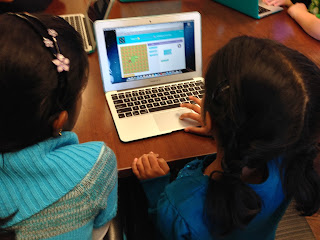One of my goals this year is to make sure that nonfiction is more valued in the classroom. I want students to find nonfiction they enjoy reading--books they read because it's interesting--not because it's for school, a project, etc. I just want them to think about nonfiction in ways that invite joy and wonder.
One thing I noticed last year was that I didn't focus on nonfiction enough early in the year. I didn't read enough nonfiction as part of #classroombookaday. I didn't booktalk enough nonfiction. So this year, I hope to do better.
I think participating in NCTE's Mock Orbis Pictus Award will help us start the year thinking about nonfiction in new ways. I spent some time this week looking closely at the Orbis Pictus Award criteria and I think talking around these things will open up great conversations around nonfiction--it will give us all a new way to think about and analyze nonfiction, which in turn will probably make us better readers of nonfiction. It will also help us think about credible sources, the ways visuals and text work together and more.
The Orbis Pictus Award criteria (taken directly from the NCTE site) includes the following:
- Accuracy—current and complete facts, balance of fact and theory, varying points of view, avoidance of stereotypes, author’s qualifications adequate, appropriate scope, authenticity of detail
- Organization—logical development, clear sequence, interrelationships indicated, patterns provided (general-to-specific, simple-to-complex, etc.)
- Design—attractive, readable; illustrations that complement text, placement of illustrative material appropriate and complementary; appropriate media, format, type
- Style—writing is interesting and stimulating, reveals author’s enthusiasm for subject; curiosity and wonder encouraged; appropriate terminology, rich language
So far, I've added several nonfiction titles to the classroom library. Some that I think will be interesting to think about as we participate in Mock Orbis are:
I will continue to keep up with nonfiction and am excited about approaching nonfiction in this way this fall with my students.
If you know of any great 2018 nonfiction books we should read and discuss as part of our #NCTEMockOrbis work, let me know in the comments! Hoping to see lots of people talking about this on Twitter and Instagram as we share great new nonfiction titles. Check out the link and join us!














